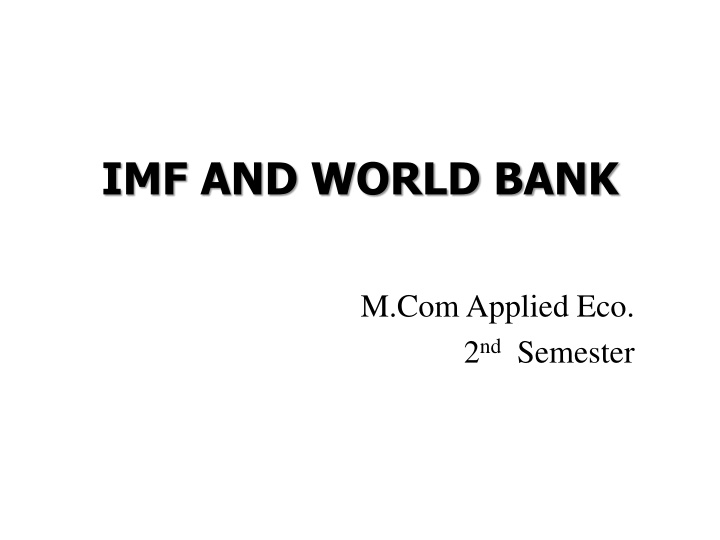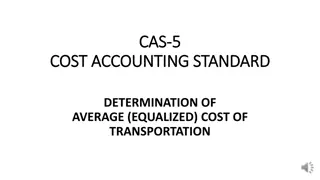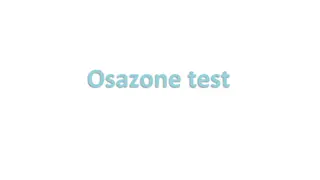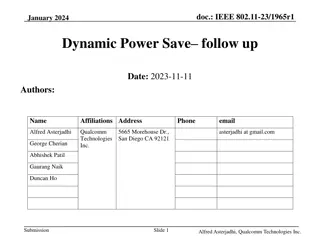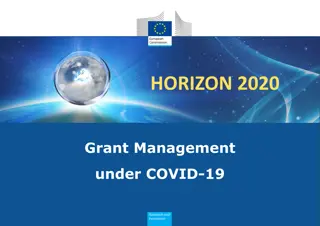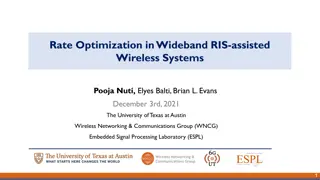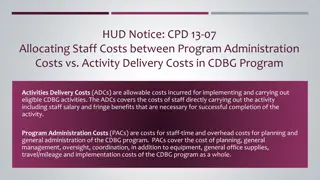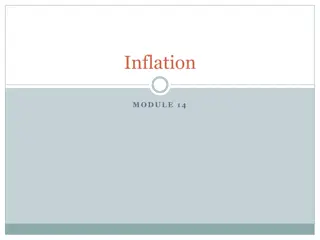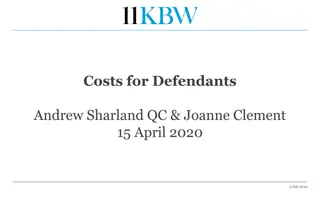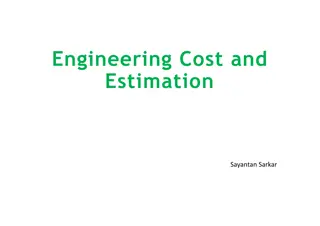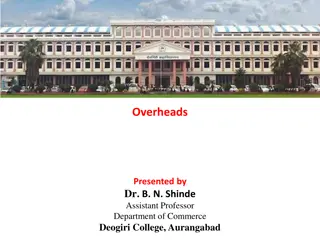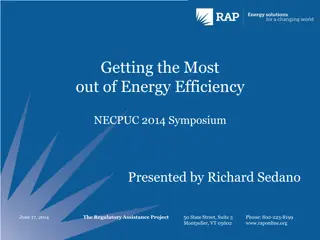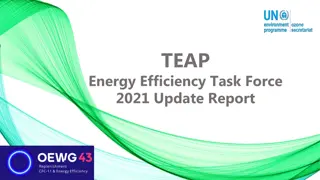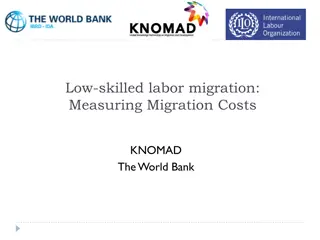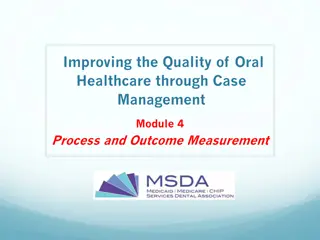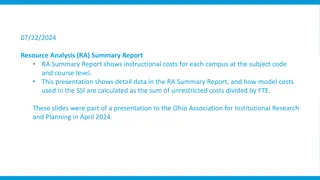Role of Quality Management Systems in Enhancing Efficiency & Reducing Costs
Quality management systems play a crucial role in improving efficiency and reducing costs within healthcare organizations. This involves implementing SOPs, ensuring safe practices, and maximizing resource utilization. Accredited hospitals with QMS in place have an advantage, especially during crises like Covid-19. From managing infection control to enhancing care continuity, QMS helps in optimizing processes, minimizing waste, and ensuring patient safety. This article highlights the importance of QMS in healthcare operations and its impact on cost reduction and efficiency improvements.
Download Presentation

Please find below an Image/Link to download the presentation.
The content on the website is provided AS IS for your information and personal use only. It may not be sold, licensed, or shared on other websites without obtaining consent from the author.If you encounter any issues during the download, it is possible that the publisher has removed the file from their server.
You are allowed to download the files provided on this website for personal or commercial use, subject to the condition that they are used lawfully. All files are the property of their respective owners.
The content on the website is provided AS IS for your information and personal use only. It may not be sold, licensed, or shared on other websites without obtaining consent from the author.
E N D
Presentation Transcript
IMF AND WORLD BANK M.ComApplied Eco. 2ndSemester
IMF AND WORLD BANK In 1944, after the 2ndworld 44 aliened nation meet up at the Bretton wood conference at New Hamsphire, USA to resolve the international financial crisis and 2 organization formed i.e, IMF World bank IMF objective is global growth and economic stability of reconstructing the international payment system. The World Bank Group provides financing, policy advice, and technical assistance to governments, and also focuses on strengthening the private sector in developing countries
History The World Bank was created at the 1944 Bretton Woods Conference, along with the International Monetary Fund (IMF). The president of the World Bank is, traditionally, an American. The World Bank and the IMF are both based in Washington, D.C., and work closely with each other. 1944 1974 In its early years the Bank made a slow start for two reasons: it was underfunded, and there were leadership struggles between the US Executive Director and the President of the organization. When the Marshall Plan went into effect in 1947, many European countries began receiving aid from other sources. Faced with this competition, the World Bank shifted its focus to non- European countries. Until 1968, its loans were earmarked for the construction of infrastructure works, such as seaports, highway systems, and power plants, that would generate enough income to enable a borrower country to repay the loan. In 1960, the International Development Association was formed (as opposed to a UN fund named SUNFED), providing soft loans to developing countries.
Before 1974, the reconstruction and development loans provided by the World Bank were relatively small. The Bank's staff were aware of the need to instill confidence in the bank. Fiscal conservatism ruled, and loan applications had to meet strict criteria. 1974 1980 From 1974 to 1980 the bank concentrated on meeting the basic needs of people in the developing world . The size and number of loans to borrowers was greatly increased, as loan targets expanded from infrastructure into social services and other sectors. These changes can be attributed to Robert McNamara, who was appointed to the presidency in 1968 by Lyndon B. Johnson. McNamara implored bank treasurer Eugene Rotberg to seek out new sources of capital outside of the northern banks that had been the primary sources of funding. Rotberg used the global bond market to increase the capital available to the bank. One consequence of the period of poverty alleviation lending was the rapid rise of Third World debt. From 1976 to 1980, developing world debt rose at an average annual rate of 20%.
1980 to Till Date . During the 1980s the bank emphasized lending to service Third- World debt, and structural adjustment streamline the economies of developing nations. UNICEF reported in the late 1980s that the structural adjustment programs of the World Bank had been responsible for "reduced health, nutritional and educational levels for tens of millions of children in Asia, Latin America, and Africa". .In 1991 the bank announced that to protect against deforestation, especially in the Amazon, it would not finance any commercial logging or infrastructure projects that harm the environment. policies designed to
Traditionally, based on a tacit understanding between the United States and Europe, the president of the World Bank has always been selected from candidates nominated by the United States. In 2012, for the first time, two non-US citizens were nominated. On 23 March 2012, U.S. President Barack Obama announced that the United States would nominate Jim Yong Kim as the next president of the Bank. Jim Yong Kim was elected on 27 April 2012 and re-elected for a second five-year term in 2017. He announced that he will resign effective 1 February 2019. He was replaced on an interim basis by now former World Bank CEO, Kristalina Georgieve.
INTRODUCTION Known collectively as the Bretton Woods Institutions after the remote village in New Hampshire, U.S.A., where John Maynard Keynes were founded by the delegates of 44 nations in July 1944, the Bank and the IMF are Twin intergovernmental pillars supporting the structure of the world s economic and financial order. Those who deal professionally with the IMF and Bank find them categorically distinct. To the rest of the world, the niceties of the division of labor are even more mysterious than are the activities of the two institutions. Similarities between them do little to resolve the confusion. Superficially the Bank and IMF exhibit many common characteristics. Both are in a sense owned and directed by the governments of 180 member nations.
The Peoples Republic of China, by far the most populous state on earth, is a member, as is the world s largest industrial power (the United States). In fact, virtually every country on earth is a member of both institutions. Both institutions concern themselves with economic issues and concentrate their efforts on broadening and strengthening the economies of their member nations. . The two institutions hold joint annual meetings, which the news media cover extensively. Both have headquarters in Washington, D.C., where popular confusion over what they do and how they differ is about as pronounced as everywhere else. For many years both occupied the same building and even now, though located on opposite sides of a street very near the White House, they share a common library and other facilities, regularly exchange economic data, sometimes present joint seminars, daily hold informal meetings, and occasionally send out joint missions to member countries
Despite these and other similarities, however, the Bank and the IMF remain distinct. The fundamental difference is this: the Bank is primarily a development institution the IMF is a cooperative institution that seeks to maintain an orderly system of payments and receipts between nations. Each has a different purpose, a distinct structure, receives its funding from different sources, assists different categories of members, and strives to achieve distinct goals through methods peculiar to itself.
Purpose At Bretton Woods the international community assigned to the World Bank the aims implied in its formal name, the International Bank for Reconstruction and Development (IBRD), giving it primary responsibility for financing economic development. The Bank s first loans were extended during the late 1940s to finance the reconstruction of the war-ravaged economies of Western Europe. When these nations recovered some measure of economic self- sufficiency, the Bank turned its attention to assisting the world s poorer nations, known as developing countries, to which it has since the 1940s loaned more than $330 billion. The World Bank has one central purpose: to promote economic and social progress in developing countries by helping to raise productivity so that their people may live a better and fuller life.
The international community assigned to the IMF a different purpose. In establishing the IMF, the world community was reacting to the unresolved financial problems instrumental in initiating and protracting the Great Depression of the 1930s sudden, unpredictable variations in the exchange values of national currencies and a widespread disinclination among governments to allow their national currency to be exchanged for foreign currency. Set up as a voluntary and cooperative institution, the IMF attracts to its membership nations that are prepared, in a spirit of enlightened self- interest, to relinquish some measure of national sovereignty by abjuring practices injurious to the economic well-being of their fellow member nations. The rules of the institution, contained in the IMF s Articles of Agreement signed by all members, constitute a code of conduct. The code is simple: it requires members to allow their currency to be exchanged for foreign currencies freely and without restriction, to keep the IMF informed of changes they contemplate in financial and monetary policies that will affect fellow members economies, and, to the extent possible, to modify these policies on the advice of the IMF to accommodate the needs of the entire membership. To help nations abide by the code of conduct, the IMF administers a pool of money from which members can borrow when they are in trouble.
The IMF is not, however, primarily a lending institution as is the Bank. It is first and foremost an overseer of its members monetary and exchange rate policies and a guardian of the code of conduct. Philosophically committed to the orderly and stable growth of the world economy, the IMF is an enemy of surprise. It receives frequent reports on members economic policies and pro specs, which it debates, comments on, and communicates to the entire membership so that other members may respond in full knowledge of the facts and a clear understanding of how their own domestic policies may affect other countries. The IMF is convinced that a fundamental condition for international prosperity is an orderly monetary system that will encourage trade, create jobs, expand economic activity, and raise living standards throughout the world. By its constitution the IMF is required to oversee and maintain this system, no more and no less.
Structure The IMF is small (about 2,300 staff members) and, unlike the World Bank, has no affiliates or subsidiaries. Most of its staff members work at headquarters in Washington, D.C., although three small offices are maintained in Paris, Geneva, and at the United Nations in New York. Its professional staff members are for the most part economists and financial experts. The structure of the Bank is somewhat more complex. The World Bank itself comprises major organizations associated with, but legally and financially separate from the World Bank With over 7,000 staff members, the World Bank Group is about three times as large as the IMF, and maintains about 40 offices throughout the world, although 95 percent of its staff work at its Washington, D.C., headquarters. The Bank employs a staff with an astonishing range of expertise economists, engineers, urban planners, agronomists, statisticians, lawyers, portfolio managers, loan officers, project appraisers, as well as experts in telecommunications, water supply and sewerage, transportation, education, energy, rural development, population and health care, and other disciplines.
WORLD BANK GROUP The term "World Bank" generally refers to just the IBRD and IDA World Bank World Bank Formation- 27 December 1945 Type- International organization Legal status- Treaty Purpose/focus- Economic development, poverty elimination Membership- 187 countries President- Robert Zoellick Jim Yong Kim (Elect) Main organ- Board of Directors The World Bank's activities are focused on developing countries, in fields such as human development, agriculture and rural development, environmental infrastructure, and governance. protection, It is concerned with assisting its member countries to achieve sustained economic growth. It functions as an intermediary for the transfer of financial resources from the more developed to the less developed countries.
THE WORLD BANK GROUP THE WORLD BANK GROUP
INTERNATIONAL BANK FOR INTERNATIONAL BANK FOR RECONSTRUCTION AND DEVELOPMET RECONSTRUCTION AND DEVELOPMET (IBRD) (IBRD) 1.The International Bank for Reconstruction and Development was established in 1945. 2. It had 184 members. 3. The IBRD is an international organization whose original mission was to finance the reconstruction of nations devastated by World War II. 4. Now, its mission has expanded to fight poverty by means of financing states. 5. Cumulative lending: $394 billion 6. Fiscal 2004 lending: $11 billion for 87 new operations in 33 countries
INTERNATIONAL DEVELOPMENT INTERNATIONAL DEVELOPMENT ASSOCIATION (IDA) ASSOCIATION (IDA) 1.The International Development Association was established in September 24, 1960. 2. 165 Members is the part of the World Bank that helps the world s poorest countries. 3. IDA is responsible for providing long-term, interest- free loans to the world's 80 poorest countries, 39 of which are in Africa. 4. Fiscal 2004 commitments: $9 billion for 158 new operations in 62 countries
MULTILATERAL INVESTMENT AND MULTILATERAL INVESTMENT AND GUARENTEE AGENCY (MIGA) GUARENTEE AGENCY (MIGA) 1. The Multilateral Investment Guarantee Agency was established in 1988. 2. It had165 members. 3. Cumulative guarantees (Amounts include funds Cooperative Underwriting Program). 4. Fiscal 2004 guarantees issued: $1.1 billion issued: leveraged $13.5 through billion the
INTERNATIONAL FINANCE INTERNATIONAL FINANCE CORPORATION (IFC) CORPORATION (IFC) The International Finance Corporation was established in 1956. 2. It had 176 members. 3. Committed portfolio: $23.5 billion (includes $5.5 billion in syndicated loans). 4. It promotes sustainable private sector investment in developing countries as a way to reduce poverty and improve people's lives. 5. Fiscal 2004 commitments: $4.8 billion for 217 projects in 65 countries.
INTERNATIONAL CENTRE FOR THE INTERNATIONAL CENTRE FOR THE SETTLEMENT OF INVESTMENT DISPUTES SETTLEMENT OF INVESTMENT DISPUTES (ICSID) (ICSID) 1. The International Centre for Settlement of Investment Disputes was established in 1966. 2. It had 143 members. 3. Total cases registered: 159 4. It provides facilities for the conciliation and arbitration of investment disputes between member countries and individual investors. 5. Fiscal 2004 cases registered: 30
Source of Funding The World Bank is an investment bank, intermediating between investors and recipients, borrowing from the one and lending to the other. Its owners are the governments of its 179 member nations with equity shares in the Bank, which were valued at about $176 billion in June 1995. The IBRD obtains most of the funds it lends to finance development by market borrowing through the issue of bonds to individuals and private institutions in more than 100 countries. Its concessional loan associate, IDA, is largely financed by grants from donor nations. The Bank is a major borrower in the world s capital markets and the largest nonresident borrower in virtually all countries where its issues are sold. It also borrows money by selling bonds and notes directly to governments, their agencies, and central banks. The proceeds of these bond sales are lent in turn to developing countries at affordable rates of interest to help finance projects and policy reform programs that give promise of success.
Despite Lord Keyness profession of confusion, the IMF is not a bank and does not intermediate between investors and recipients. Never The less, it has at its disposal significant resources, presently valued at over $215 billion. These resources come from quota subscriptions, or membership fees, paid in by the IMF s 180 member countries. Each member contributes to this pool of resources a certain amount of money proportionate to its economic size and strength (richer countries pay more, poorer less). While the Bank borrows and lends, the IMF is more like a credit union whose members have access to a common pool of resources (the sum total of their individual contributions) to assist them in times of need. Although under special and highly restrictive circumstances the IMF borrows from official entities (but not from private markets), it relies principally on its quota subscriptions to finance its operations. The adequacy of these resources is reviewed every five years.
Recipients of Funding Neither wealthy countries nor private individuals borrow from the World Bank, which lends only to creditworthy governments of developing nations. The poorer the country, the more favorable the conditions under which it can borrow from the Bank. Developing countries whose per capita gross national product (GNP) exceeds $1,305 may borrow from the IBRD. (Per capita GNP , a less formidable term than it sounds, is a measure of wealth, obtained by dividing the value of goods and services produced in a country during one year by the number of people in that country.) These loans carry an interest rate slightly above the market rate at which the Bank itself borrows and must generally be repaid within 12 15 years. The IDA, on the other hand, lends only to governments of very poor developing nations whose per capita GNP is below $1,305, and in practice IDA loans go to countries with annual per capita incomes below $805. IDA loans are interest free and have a maturity of 35 or 40 years.
In contrast, all member nations, both wealthy and poor, have the right to financial assistance from the IMF. Maintaining an orderly and stable international monetary system requires all participants in that system to fulfill their financial obligations to other participants. Membership in the IMF gives to each country that experiences a short age of foreign exchange, preventing it from fulfilling these obligations , temporary access to the IMF s pool of currencies to resolve this difficulty, Usually referred to as a balance of payments problem. These problems are no respecter of economic size or level of per capita GNP, with the result that over the years almost all members of the IMF, from the smallest developing country to the largest industrial country, have at one time or other had recourse to the IMF and received from it financial assistance to tide them over difficult periods. Money received from the IMF must normally be repaid within three to five years, and in no case later than ten years. Interest rates are slightly below market rates, but are not so-concessional as those assigned to the World Bank s IDA loans. Through the use of IMF resources, countries have been able to buy time to rectify economic policies and to restore growth without having to resort to actions damaging to other members economies.
World Bank Operations The World Bank exists to encourage poor countries to develop by providing them with technical assistance and funding for projects and policies that will realize the countries economic potential. The Bank views development as a long term, integrated endeavor. During the first two decades of its existence, two thirds of the assistance provided by the Bank went to electric power and transportation projects. Although these so-called infrastructure projects remain important, the Bank has diversified its activities in recent years as it has gained experience with and acquired new insights into the development process. The Bank gives particular attention to projects that can directly benefit the poorest people in developing countries. The direct involvement of the poorest in economic activity is being promoted through lending for agriculture and rural development, small-scale enterprises, and urban development.
The Bank is helping the poor to be more productive and to gain access to such necessities as safe water and waste-disposal facilities, health care, family-planning assistance, nutrition, education, and housing. Within infrastructure projects there have also been changes. In transportation projects, greater attention is given to constructing farm-to-market roads. Rather than concentrating exclusively on cities, power projects increasingly provide lighting and power for villages and small farms. Industrial projects place greater emphasis on creating jobs in small enterprises. Labor intensive construction is used where practical. In addition to electric power, the Bank is supporting development of oil, gas, coal, fuelwood, and biomass as alternative sources of energy. The Bank provides most of its financial and technical assistance to developing countries by supporting specific projects. The Bank serves as executing agency for technical assistance projects financed by the United Nations Development Program in agriculture and rural development, energy, and economic planning.
In response to the economic climate in many of its member countries, the Bank is now emphasizing technical assistance for institutional development and macroeconomic policy formulation. Every project supported by the Bank is designed in close collaboration with national governments and local agencies, and often in cooperation with other multilateral assistance organizations. Indeed, about half of all Bank-assisted projects also receive co-financing from official sources, that is; governments, multilateral financial institutions, export - credit agencies that directly finance the procurement of goods and services, from private sources-such as commercial banks.
In making loans to developing countries, the Bank does not compete with other sources of finance. It assists only those projects for which the required capital is not available from other sources on reasonable terms. Through its work, the Bank seeks to strengthen the economies of borrowing nations so that they can graduate from reliance on Bank resources and meet their financial needs, on terms they can afford directly from conventional sources of capital. The range of the Bank s activities is far broader than its lending operations. Since the Bank s lending decisions depend heavily on the economic condition of the borrowing country, the Bank carefully studies its economy and the needs of the sectors for which lending is contemplated. These analyses help in formulating an appropriate long-term development assistance strategy for the economy.
IMF Operations 1) the adoption of general convertibility among the major currencies supervised a system of fixed exchange rates tied to the value of gold provided short-term financing to countries in need of a quick infusion of foreign exchange to keep their currencies at par value or to adjust to changing economic circumstances. Difficulties encountered in maintaining a system of fixed exchange rates gave rise to unstable monetary and financial conditions throughout the world and led the international community to reconsider how the IMF could most effectively function in a regime of flexible exchange rates 1) After five years of analysis and negotiation (1973 78), the IMF s second phase began with the amendment of its constitution in 1978, broadening its functions to enable it to grapple with the challenges that have arisen since the collapse of the par value system. The IMF has gone through two distinct phases in its 50-year history. During the first phase, ending in 1973, the IMF oversaw
These functions are three. i. First, the IMF continues to urge its members to allow their national currencies to be exchanged without restriction for the currencies of other member countries. As of May 1995, 101 members had agreed to full convertibility of their national currencies. ii. Second, in place of monitoring members compliance with their obligations in a fixed exchange system, the IMF supervises economic policies that influence their balance of payments in the presently legalized flexible exchange rate environment. iii. This supervision provides opportunities for an early warning of any exchange rate or balance of payments problem. In this, the IMF s role is principally advisory. It confers at regular intervals (usually once a year) with its members, analyzing their economic positions
The International Monetary Fund and the World Bank at a Glance International Monetary Fund oversees the international monetary system promotes exchange stability and orderly exchange relations among its member countries assists all members both industrial and developing countries that find themselves in temporary balance of payments difficulties, by providing short- to medium-term credits supplements the currency reserves of its members through the allocation of SDRs (special drawing rights); to date SDR 21.4 billion has been issued to member countries in proportion to their quotas draws its financial resources principally from the quota subscriptions of its member countries has at its disposal fully paid-in quotas now totaling SDR 145 billion (about $215 billion) has a staff of 2,300 from 180 member countries
World Bank seeks to promote the economic development of the world s poorer countries assists developing countries through long-term financing of development projects and programs provides to the poorest developing countries whose per capita GNP is less than $865 a year special financial assistance through the International Development Association (IDA) encourages private enterprises in developing countries through its affiliate, the International Finance Corporation (IFC) acquires most of its financial resources by borrowing on the international bond market has an authorized capital of $184 billion, of which members pay in about 10 percent has a staff of 7,000 from 179 member countries.
